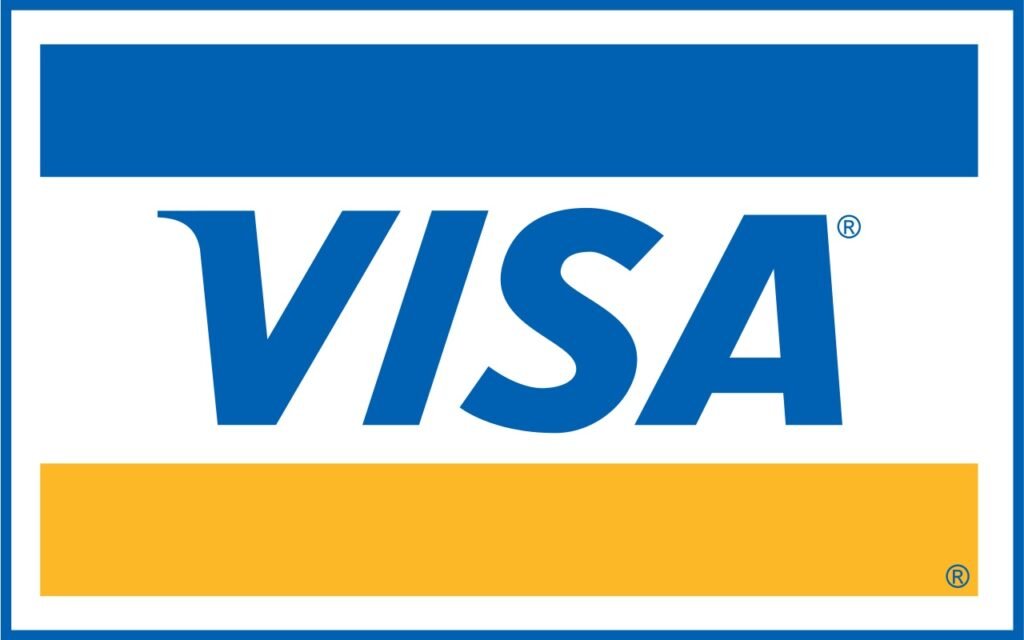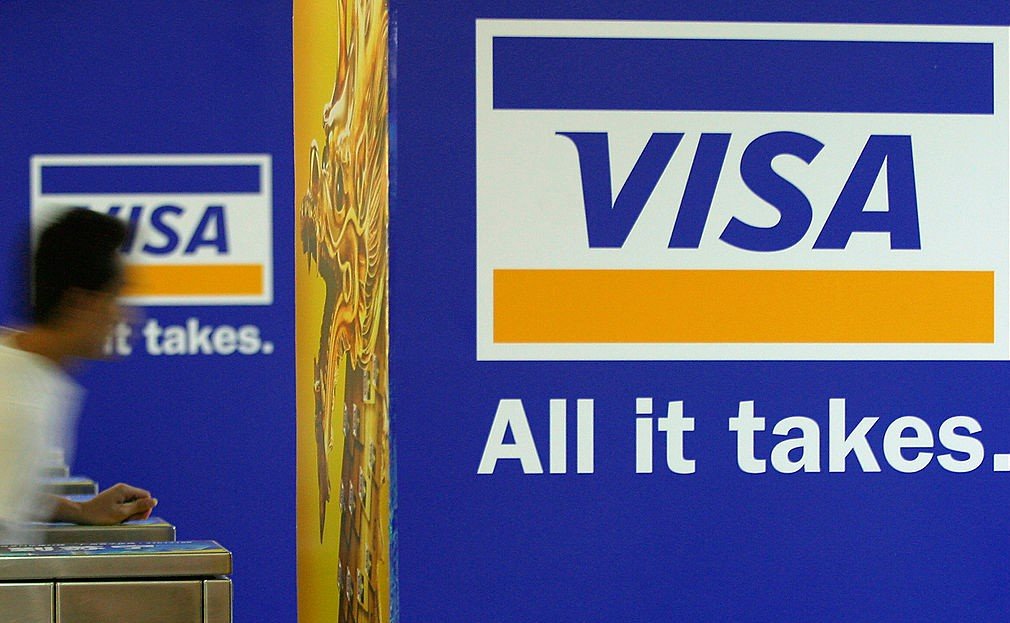Visa Marketing Strategy – Marketing Strategy of Visa: Visa is a global payments technology provider that operates in over 200 countries. It connects businesses, financial institutions, and consumers to enable them to use digital platforms instead of cash. The company was founded by Hock Dee in 1970 and is headquartered in San Francisco.
Contents
- 1 Visa At A Glance – Marketing Strategy of Visa
- 2 Visa Competitors
- 3 Marketing Strategy of Visa
- 4 Segmentation, Targeting, Positioning – Visa Marketing Strategy
- 5 Visa Mission Statement
- 6 Visa Vision Statement
- 7 Visa Tagline
- 8 Competitive Advantage – Visa Marketing Strategy
- 9 BCG Matrix – Visa Marketing Strategy
- 10 Distribution Strategy – Visa Marketing Strategy
- 11 Brand equity – Visa Marketing Strategy
- 12 Competitive Analysis – Visa Marketing Strategy
- 13 Market Analysis – Visa Marketing Strategy
- 14 Customer Analysis – Visa Marketing Strategy
Visa At A Glance – Marketing Strategy of Visa
[wp-svg-icons icon=”office” wrap=”I”] Company : Visa inc.
[wp-svg-icons icon=”user” wrap=”I”] CEO: Alfred F Kelly Jr
[wp-svg-icons icon=”user” wrap=”I”] Founder: Dee Hock
[wp-svg-icons icon=”calendar” wrap=”I”] Year founded: September 1958, Fresno, CA
[wp-svg-icons icon=”location-2″ wrap=”I”] Headquarters: San Francisco, CA
[wp-svg-icons icon=”stats” wrap=”I”] Annual Revenue: 21.85 billion USD
[wp-svg-icons icon=”bars” wrap=”i”] Profit | Net income: 10.87 billion USD
[wp-svg-icons icon=”users” wrap=”I”] Number of employees : 20,500
[wp-svg-icons icon=”pie” wrap=”i”] Products & Services: Visa-branded credit, debit, commercial, prepaid, mobile, and money transfer products
[wp-svg-icons icon=”globe” wrap=”I”] Website: visa.com
Visa Competitors
[wp-svg-icons icon=”pacman” wrap=”I”] Competitors: Stripe | Mastercard | Capital One | American Express | PayPal
Visa Fun Facts: The term Visa was conceived by the company’s founder, Dee Hock. He believed that the word was instantly recognizable in many languages in many countries and that it also denoted universal acceptance.
Marketing Strategy of Visa
Visa’s Marketing Strategy covers various aspects of the business right from segmentation and targeting to the overall mission and vision of the company and the various parameters which the company executes to become the top brand that it has in the market. So what is the Marketing Strategy of Visa? Let us discuss.
Segmentation, Targeting, Positioning – Visa Marketing Strategy
Visa, being a technology-driven company, uses geographic, psychological, and demographic variables such as age, marital status, income level, and occupation for segmentation. Visa is a mass-marketing company. The potential customers are all of them. Visa cards might be needed by anyone, whether they are a salaried employee or a businessman, or a retired person.
It employs targeted segmentation to market customers from the identified segments. Its target market comprises individuals who have an income to spend and people in need of credit. It targets banks and other financial services as its main customers.
Visa has established itself as a brand that values the convenience of its stakeholders, their trust, and reliance on the company. It employs value-based positioning strategies
Visa Mission Statement
to connect the world through the most innovative, reliable, and secure payment network
Visa Vision Statement
“Our vision is to be the best way to pay and be paid for everyone, everywhere”
Visa Tagline
“Everywhere you want to be”
Competitive Advantage – Visa Marketing Strategy
Advanced technology:
It is a technology company that integrates security, reliability, and processes into various functions to serve clients across multiple mediums, whether they are mobile platforms or internet networks. Visa’s digital platform is protected by several layers of security.
It collaborates with companies to make digital payments safe, secure, and fast. It has many technology partners, including Samsung and Google. This allows the company to support hundreds upon hundreds of financial institutions worldwide.
Brand equity:
Mastercard and Visa are the only players that are well-known for their payment systems around the globe. Although there are many other cards, none have the same popularity as Mastercard or Visa. Visa is the most well-known card and has the highest brand equity. This is due to its aggressive expansion strategy.
BCG Matrix – Visa Marketing Strategy
Global technology payment company is in the business risk management and network processor.
It operates in all the BCG stars. They have a high market share and a high market growth. The competition is strong and the business will not have the highest market share or the fastest growth rate. Visa can therefore be considered a Star in the BCG matrix.
Distribution Strategy – Visa Marketing Strategy
It works in four-party models, working together with merchants, network processors, issuers, and acquirers. It has 16,800 clients in financial institutions (as of 30.09.2016), 44,000,000 merchants’ locations globally (as of 30.06.2016), and a global base of 3.1 million visa cards as of June 2016. It distributes its products worldwide through distribution agreements made with financial service companies.
Brand equity – Visa Marketing Strategy
- Visa was ranked 27 on the list of the most innovative companies worldwide
- According to Forbes magazine, it is ranked 30 as the most valuable company in the world.
- It has been ranked 6th in BrandZ Top 100 Most Valuable Global Brands rankings
- It was ranked at 61 in Interbrand’s 2016 Top Global Brands.
- Based on the market capitalization method, it was valued at $ 189.8 million. (As per May 2016
Competitive Analysis – Visa Marketing Strategy
Mastercard is the most popular competitor to Visa. Mastercard is a close competitor to Visa. It has similar tie-ups and corporates around the globe. Mastercard is the largest competitor to Visa in direct competition.
Visa is being challenged by other digital mediums like M-wallet and online service integrations. Visa faces competition from national and global players in various segments of its business. Visa’s strategy to stay competitive in the market is to collaborate with other companies and offer products that are co-branded.
Market Analysis – Visa Marketing Strategy
The market in developed countries has its own set of challenges that affect the company’s growth, while the emerging markets are for the company.
The dynamic of the demand is changing due to factors such as an increase in per capita income, increased literacy rate, automation within the financial sector, customers finding it easier to use digital and interrelated products and/or services like debit/ credit cards, merchant services such POS/ Mobile Pos machines, travel and leisure, and many other factors.
Customer Analysis – Visa Marketing Strategy
Visa customers are tech-savvy individuals who seek digital products to simplify their daily transactions. Its customers include most of those aged between 20-40 years in the B2C segment, while customers in the B2B segment ( business-to-business) are made up of companies from a variety of industries.
You May Also Like:
- Marketing Strategy of Aquafina
- Marketing Strategy of Tommy Hilfiger
- Marketing Strategy of Reebok
- Marketing Strategy of Lays
- Marketing Strategy of Nintendo
This is the Marketing Strategy of Visa. Please let us know if you have additional suggestions to add.
[wp-svg-icons icon=”bubbles” wrap=”i”] Let us know What do you think? Did you find the article interesting?
Write about your experiences and thoughts in the comments below.


